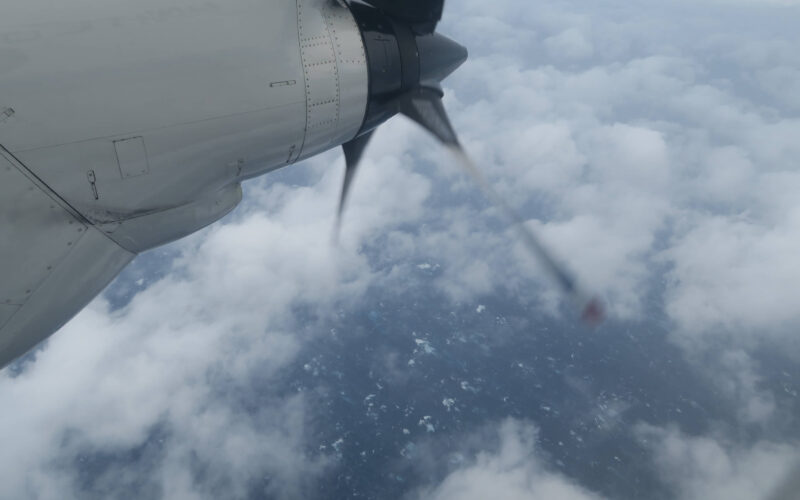Weather services from all around the world have their eyes set on Hurricane Dorian. To predict its trajectory and intensity, a varied array of data is collected in real-time. In the United States, some of those measures are taken by planes. The daring pilots, known as Hurricane Hunters, belong to two units: the U.S. Air Force 53rd Weather Reconnaissance Squadron, and pilots from the National Oceanic and Atmospheric Administration (NOAA) of the U.S. Department of Commerce.
Hurricane Dorian, a category 5 tropical cyclone with 325 km/h winds, has been dubbed the most powerful storm to ever hit the Bahamas. In order to measure its temperature, humidity, atmospheric pressure, and wind speed, satellites from NASA are not enough. Enter the specialists of the NOAA: aboard their two Lockheed WP-3D Orion (“Kermit” and “Miss Piggy”), they are able to fly directly into the eye of the hurricane for several hours and collect useful data using radiometers and probes, called “dropwindsondes”. To gather high-altitude information, the NOAA can also rely on a Gulfstream IV-SP jet.
On September 1, 2019, the NOAA released footage of the moment when the WP-3D Orion “Kermit reached the eye of Dorian.
Working in rotation with the NOAA pilots, the 53rd Weather Reconnaissance Squadron of the 403rd Wing of the Air Force Reserve Command uses a specialized aircraft, the Lockheed WC-130J “Weatherbird”. This version of Lockheed’s bestseller features a reinforced structure to withstand conditions more extreme than any warzone and a vast array of meteorological equipment.
While onboard one of those planes, Jordan Sun recorded eerie footage of the tranquility that reigns inside the eye of the hurricane.
Chasing in the eye of #Dorian pic.twitter.com/DVpwgPY1PB
— Jordan Sun (@jordan_sun20) September 2, 2019
The data collected by those two units, along with the satellite imagery provided by NASA allow the National Hurricane Center to publish a detailed report on Hurricane Dorian every three hours, allowing the decision-makers to anticipate.

